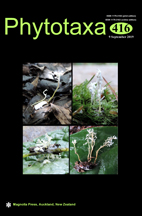Abstract
Cordyceps qingchengensis sp. nov., growing on a cocooned pupa of a silk moth (Lepidoptera: Bombycidae) and collected from southwestern China, is described, illustrated and compared with allied taxa. The species is morphologically similar to C. bifusispora and C. tenuipes, but can be easily separated from the latter two by the unique host and by branched and thicker stroma. Phylogenetic analyses of single ITS and combined SSU, LSU and TEF1-α datasets indicate that it is closely related to C. bifusispora, C. cicadae (Miq.) Massee (Chanhua) and C. tenuipes, but C. qingchengensis has distinct nucleotide differences which support it as new. Taxonomy of C. tenuipes and C. pruinosa is reviewed and C. ninchukispora (≡ Phytocordyceps ninchukispora) is considered as a synonym of C. pruinosa. Ecology and life cycles of C. qingchengensis, C. tenuipes, C. pruinosa and C. ningxiaensis are recorded and inferred. We provide important biological information for C. qingchengensis and its allies.

